Author: Poopman
Translated by: TechFlow
Stablecoins have recently become the industry's focal point, with related news emerging constantly:
The 'Genius Act' Passed
Stripe Acquires Privy and Bridge
$crcl Stock Price Rises 7 Times from IPO Price
Plasma Rapidly Completes $1 Billion Deposit Cap
Tether Becomes the 19th Largest U.S. Treasury Investment Entity
Mastercard Partners with Chainlink to Enable Stablecoin Purchases on Decentralized Exchanges
Banks, Large Tech Companies, and Asian Regions Compete to Launch Their Own Stablecoins
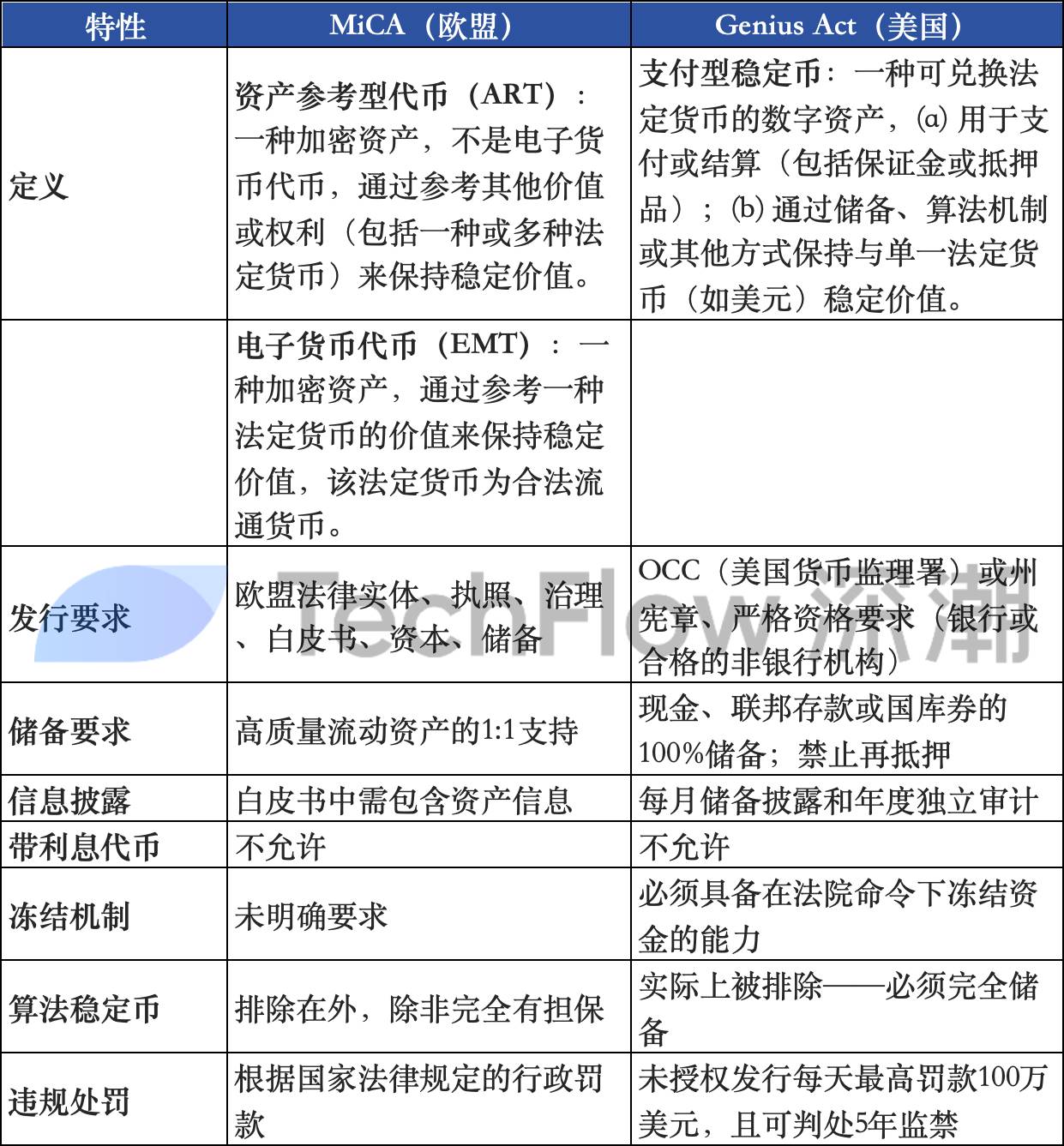
https://eu.ci/mica-vs-genius-act-2025/
The newly introduced GENIUS Act regulatory framework primarily serves two key purposes: Consumer Protection and National Security. Chainalysis provided a concise summary, and here are the basic contents:
Consumer Protection
Reserve Requirements: Must be fully backed by high-liquidity assets (such as Treasury bills with a maturity of no more than 93 days or cash).
Information Disclosure: Monthly public disclosure of reserve composition, redemption policies, and related fees on the official website.
Restrictions: Prohibited from using "USG" or any "legal" currency in marketing or promotional materials.
Bankruptcy Protection: In bankruptcy situations, stablecoin holders have priority claim rights.
Prohibition of Earnings: Issuers are not allowed to provide yields or interest for 1:1 backed stablecoins.
National Security Provisions
Bank Secrecy Act Compliance: Including anti-money laundering (AML), customer identification, transaction monitoring and record-keeping, and reporting any suspicious activities.
Technical Execution Capability: Issuers must be able to freeze and destroy tokens, and can prohibit non-compliant foreign issuers from entering the US market.
Sanction Enforcement Coordination: Before blocking foreign entity transactions, the Treasury Secretary must coordinate as much as possible with stablecoin issuers.
Enterprises must possess the ability to become a "certified" stablecoin issuer: identifying, freezing, tracking, and publicly disclosing reserves, while being able to effectively communicate with affected parties.
[The translation continues in the same manner for the entire text, maintaining the specified translations for specific terms and preserving the structure of the original text.]The Era of High-Yield Stablecoins
Whether in DeFi or personal finance, the yield market for stablecoins is becoming the focus of the crypto field. In the future, anyone holding USDC may consider how to generate returns on idle capital. Although regulation primarily benefits payment-type stablecoins, the growth of the yield market driven by stablecoins cannot be ignored.
Over the past year, Yield Bearing Stables (YBS) such as Ethena and Sky have seen their market cap grow 6-fold to $6 billion. Meanwhile, the demand for leveraged exposure and yield farming has been the main catalyst for driving the total value locked (TVL) of lending protocols like Aave, Euler, and Syrup to historical highs.
Looking back at the DeFi summer, we once enjoyed high yields brought by flywheel token economic designs, but their sustainability often depended on the token price itself. When the token price drops, the protocol might stop operating or even directly collapse.
With the success of Ethena, the CeDeFi (centralized and decentralized finance combined) model has gradually become popular. Depositors lend stablecoins to teams, who generate actual trading yields through off-chain strategies. This model has opened the prosperous era of YBS, with projects creating yields by running on-chain and off-chain strategies. While this approach escapes the limitations of token price as the protocol's sole reason for existence, it also reduces the value accumulation of the token itself.
Currently, the most common yield generation strategies in the market mainly have three forms:
Short-term Treasury Bills
Delta Neutral Strategy
Money Market Strategy
Although there are many other strategies, these are considered the "classic yield" methods verified in the market. Yield-bearing stablecoin strategies generate approximately $1.5 million in yields daily, and this trend continues to grow healthily.
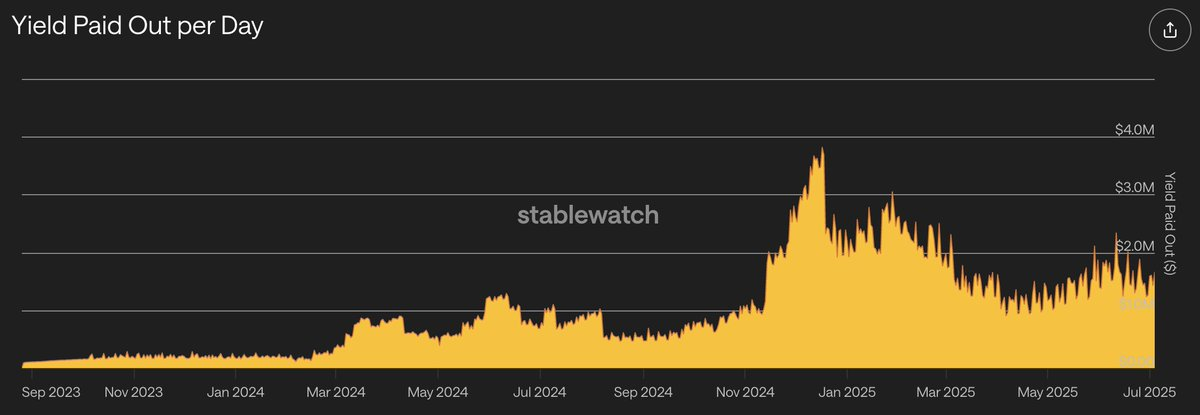
RWA Strategies and Money Markets
Yield Bearing Stables are just the tip of the iceberg.
In the next stage of the yield market, RWA (Real World Assets) strategies from traditional finance (TradFi) combined with DeFi elements (such as circular investment) will attract significant interest from institutions and funds.
Taking a recent case as an example: ACRED (Apollo Diversified Credit Securitize Fund) investors can deposit $ACRED into the Morpho Blue market and borrow USDC against it. Borrowers can then reinvest the borrowed USDC into ACRED, forming a leveraged cycle. In this setup, ACRED investors enjoy leveraged yields, while USDC providers (retail users or funds) earn interest paid by ACRED.
Here's a good example provided by Gauntlet and @redstone_defi.
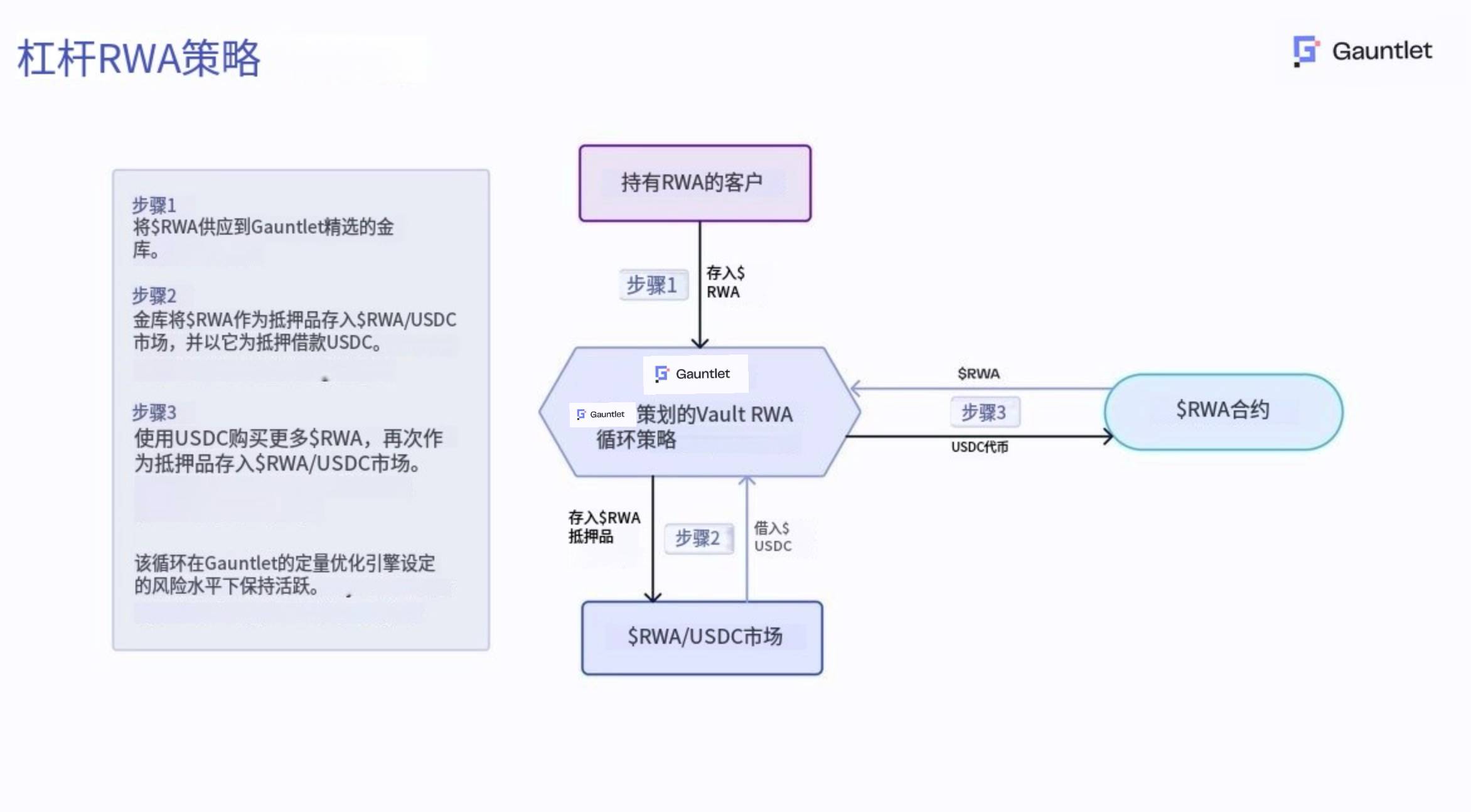
RWA Strategies
This is just one example. As traditional financial institutions gradually realize they can bring complex yield strategies and tokenized asset products on-chain and borrow stablecoins against them, this market is expected to continue expanding. As long as the underlying assets (such as USCC with an annual yield of 7.7%) can provide sustainable and attractive yields for qualified investors, the market potential is almost unlimited.
This new type of yield is generated by tokenized RWA assets and relies on leveraged expansion.
However, for new users, directly providing liquidity for different strategies may seem complex. Therefore, I believe the most suitable vault platforms for setting up these strategies include:
@upshift_fi
@MorphoLabs
@eulerfinance
@veda_labs
@maplefinance
@NestCredit
These platforms are working to maintain compliance while meeting institutional needs. However, the current legal guidance for these products remains unclear, and legal and compliance risks are still one of the main obstacles.
Gauntlet USD Alpha
Gauntlet USD Alpha ($gtUSDa) is a new product launched by the Gauntlet team, implementing off-chain strategies on the blockchain through Aera Finance's vault infrastructure. This vault is managed by "Guardians" (designated executors) and aims to help users achieve on-chain yield objectives.
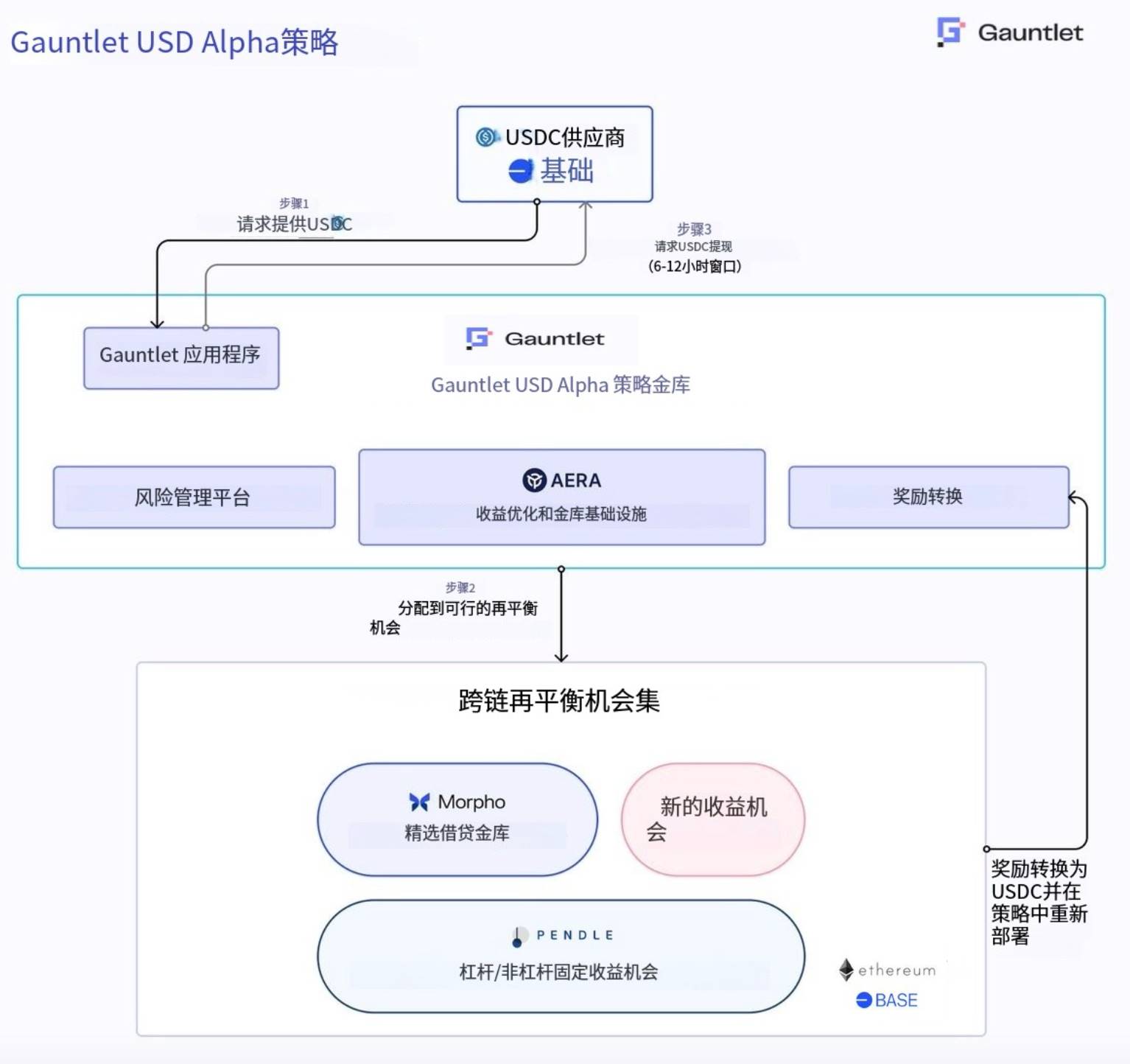
The core goal of Gauntlet USD Alpha is to dynamically allocate depositors' stablecoins to the highest-yielding lending markets and automatically adjust positions according to risk guidelines.
In backtesting, Gauntlet's risk-adjusted strategy based on Morpho (Base + ETH) outperformed Vaults.fyi's benchmark yield (7.76% Alpha yield vs. 4.46% benchmark yield). Currently, the vault is live and generating 7.2% yield, primarily allocated to $midasUSD and $gtusdcf.
Gauntlet USD Alpha provides an efficient platform for passive farmers seeking risk-adjusted yields by abstracting complex yield discovery and risk management. This innovation not only optimizes stablecoin yield strategies but also drives transparency and user-friendliness in the entire DeFi ecosystem.
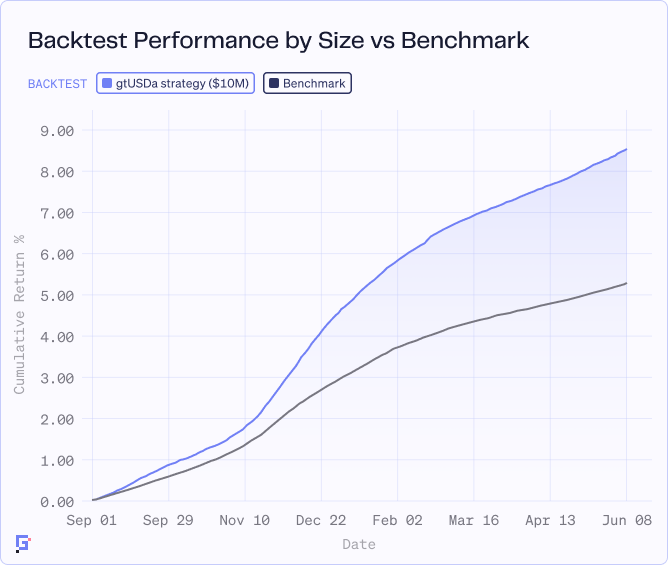
Disclaimer: The author has invested in Cap and Perena
Conclusion
Stablecoins are experiencing unprecedented development opportunities, becoming an important part of the global financial ecosystem.
With the improvement of regulatory frameworks, the mainstreaming of stablecoins is accelerating. For example, the Genius Act has provided a clear compliance framework for traditional finance (TradFi), fintech, and payment systems, enhancing confidence in their integration with stablecoins.
Emerging countries will continue to adopt stablecoins for cross-border transactions and USD exposure management. Simultaneously, more countries are beginning to tokenize their currencies, which will naturally form an around-the-clock forex market compatible with DeFi.
For more ambitious enterprises, on-chain stablecoin liquidity supports the implementation of real-world asset (RWA) strategies, such as circular investment, while retail users can earn yields by providing liquidity. Moreover, the large-scale adoption of stablecoins will stimulate demand for on-chain personal finance, driving the growth of yield-generating products.
Projects like Cap, Perena, and Gauntlet are working to address fragmentation in the stablecoin ecosystem, providing users with more efficient and centralized solutions.
Today, stablecoins are no longer "just another internet currency" but have become a powerful proof of blockchain technology's integration with the real world—enabling around-the-clock instant settlement.
The transformative journey of stablecoins has begun.







